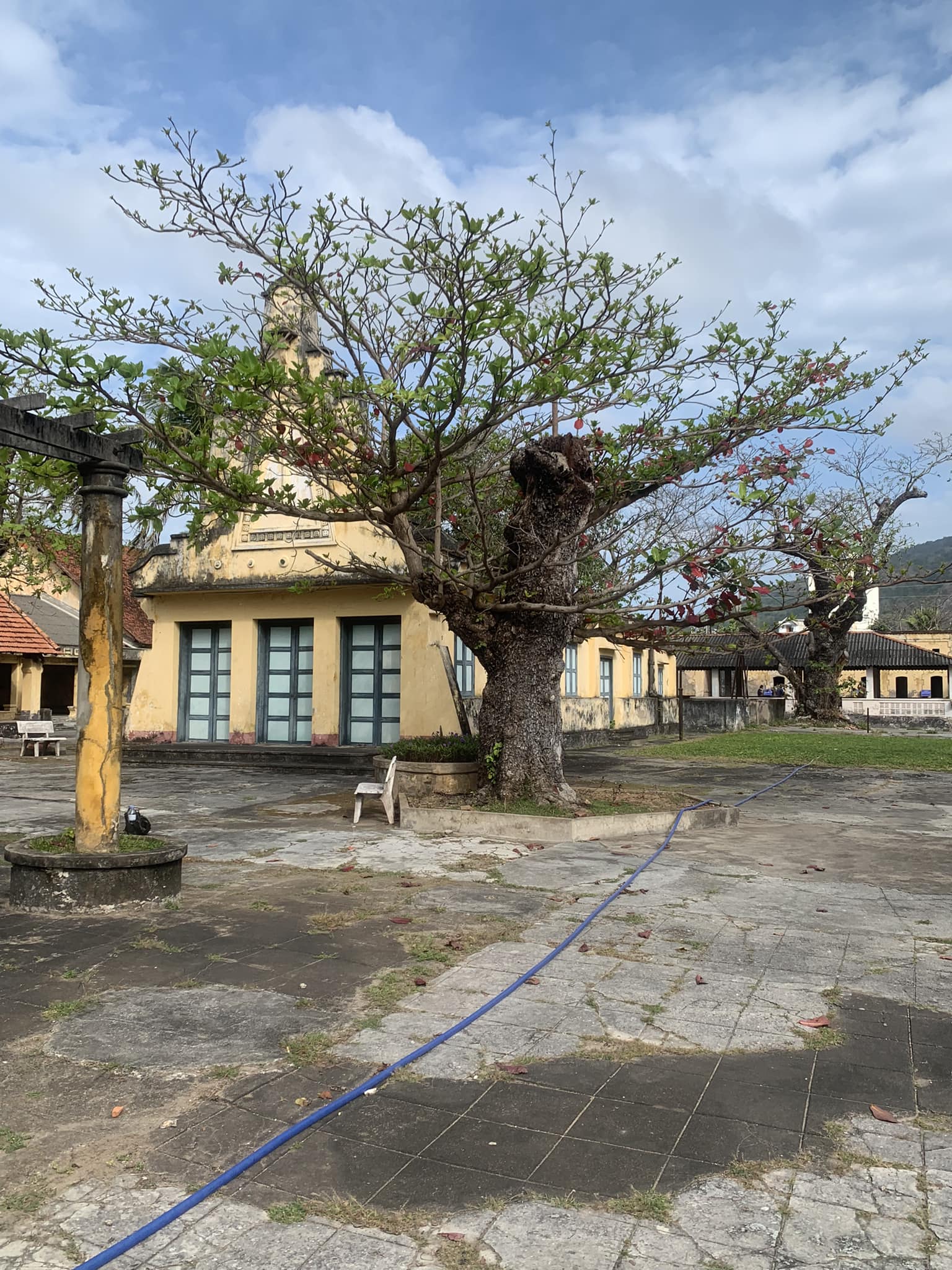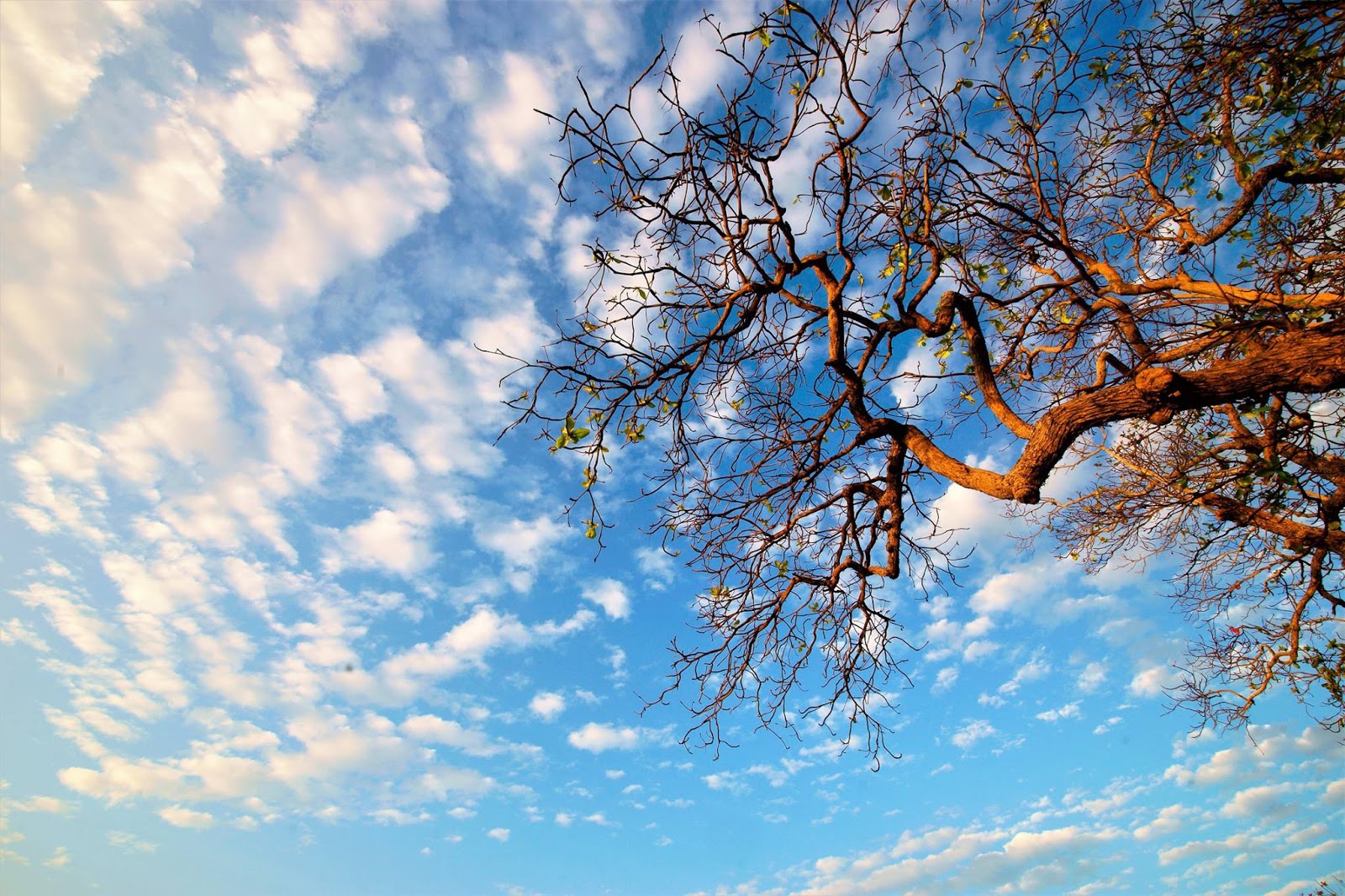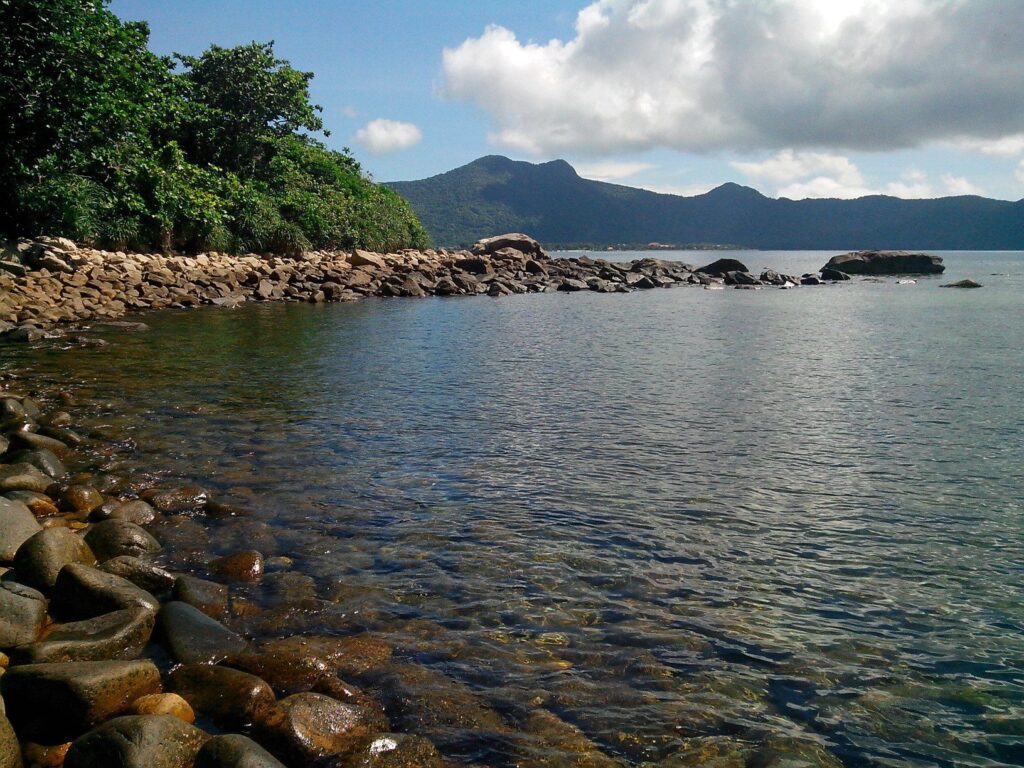Perhaps nowhere else on Earth does the tropical almond tree of Côn Đảo (Terminalia catappa) appear so distinctive, so mysterious, and so deeply intertwined with history as it does on this island.
A Tree That Exists Everywhere on the Island
Only when you come to Côn Đảo will you realize that the bàng tree is present everywhere, almost like a living being—an actual “resident” of the island.
You will find it in schoolyards, in front of gates and gardens, along every roadside corner, on coastal paths, and even on rocky mountain slopes.
Many ancient almond trees here have been recognized as Vietnamese Heritage Trees, aged over 100 years (130–150 years)—dating back to when the French first established the prison system in 1862.
These trees often reach 15 meters in height, with trunks so large that two or three adults are needed to wrap around them.
Heritage almond trees are concentrated in:
- The old prison compounds (Phu Hai, Phu Son) – 15 trees
- The former Governor’s Residence (Nhà Chúa Đảo) – 8 trees
Côn Đảo even has streets known simply as “almond roads,” lined only with giant ancient bàng trees.
Notable examples include:
- Lê Duẩn Street – 11 heritage trees
- Tôn Đức Thắng Street – the island’s most beautiful coastal road, passing the historic 914 Pier (where 914 political prisoners died during its construction), with 19 towering heritage almond trees standing proudly in perfect formation.

A Unique Species Unlike Any Other
While almond trees on the mainland usually stand alone—with thin leaves and smooth trunks—the Côn Đảo almond tree is a unique and endemic variant:
- Its leaves are thick, tough, and deep green
- Its trunk is straight and powerful, rising like a pillar toward the sky
- The bark is rough, cracked, and heavily textured
- Many trees have large, bulging knots—sometimes as wide as the rest of the trunk—shaped in strange, almost mythical forms
These knots inspire endless stories from curious visitors.
No matter the explanation, one thing is certain: they leave a strong and unforgettable impression.
The ancient bàng trees are grand and majestic, with sprawling roots extending 5–7 meters.
Perhaps the island’s abundant light and harsh climate have allowed these sun-loving trees to survive for centuries. Or perhaps they endure because they feel compelled to record—through their silent presence—everything they have witnessed for more than 150 years, since the French laid the first stone of this “hell on earth.”
Perhaps it is both.
The Spirit and Soul of Côn Đảo
Beyond their beauty, the almond trees are considered beloved companions of Côn Đảo’s residents—so familiar that people call them the “soul of the island.”
- They cast gentle shade on scorching summer days
- They shield the island from storms and violent ocean winds
- Their sturdy forms stand like protective walls against crashing waves and tropical winds
- They endure thousands of saltwater batterings every day, especially during stormy seasons
The trees not only protect but also beautify this land of hardship and resilience.
Their ancient trunks create a nostalgic, poetic landscape found nowhere else in Vietnam.
They strengthen the islanders’ love and pride for their homeland, and leave lasting impressions on travelers who come to this “island paradise.”
Many visitors have written poems, stories, paintings, or songs inspired by these remarkable trees.
The almond trees even share a delicious gift with the community: almond kernels.
These nuts are roasted and mixed with sugar or salt to create a local delicacy—a beloved snack and a popular specialty that islanders send to friends and family on the mainland.
Côn Đảo almonds are plump and fragrant—with a rich, buttery flavor unique to the island.
Silent Witnesses of History
More than just trees, the ancient bàng of Côn Đảo are the oldest surviving witnesses of the island’s turbulent past.
They bore silent witness to:
- Prisoners walking past them under chains
- Countless forced-labor marches
- The last breaths of prisoners whose bodies were carried past on their way to eternal rest at Hàng Dương Cemetery
- The unyielding revolutionary spirit of generations of communist prisoners
- The brutal repression carried out by French colonialists, American forces, and their collaborators
And through all of this, the almond trees remained—silent but steadfast companions of the prisoners.
After liberation, the trees continued their vigil—now watching over the lives of new generations, witnessing the island’s transformation every passing day.
On this heroic land of Côn Đảo, even the trees carry stories—stories of suffering, resilience, and hope.
Standing before them, one cannot help but feel respect.
Their imposing, weathered, ancient presence radiates a moral lesson—one that people today still deeply need.
Here, more than anywhere else, I learned a life lesson from a tree.








